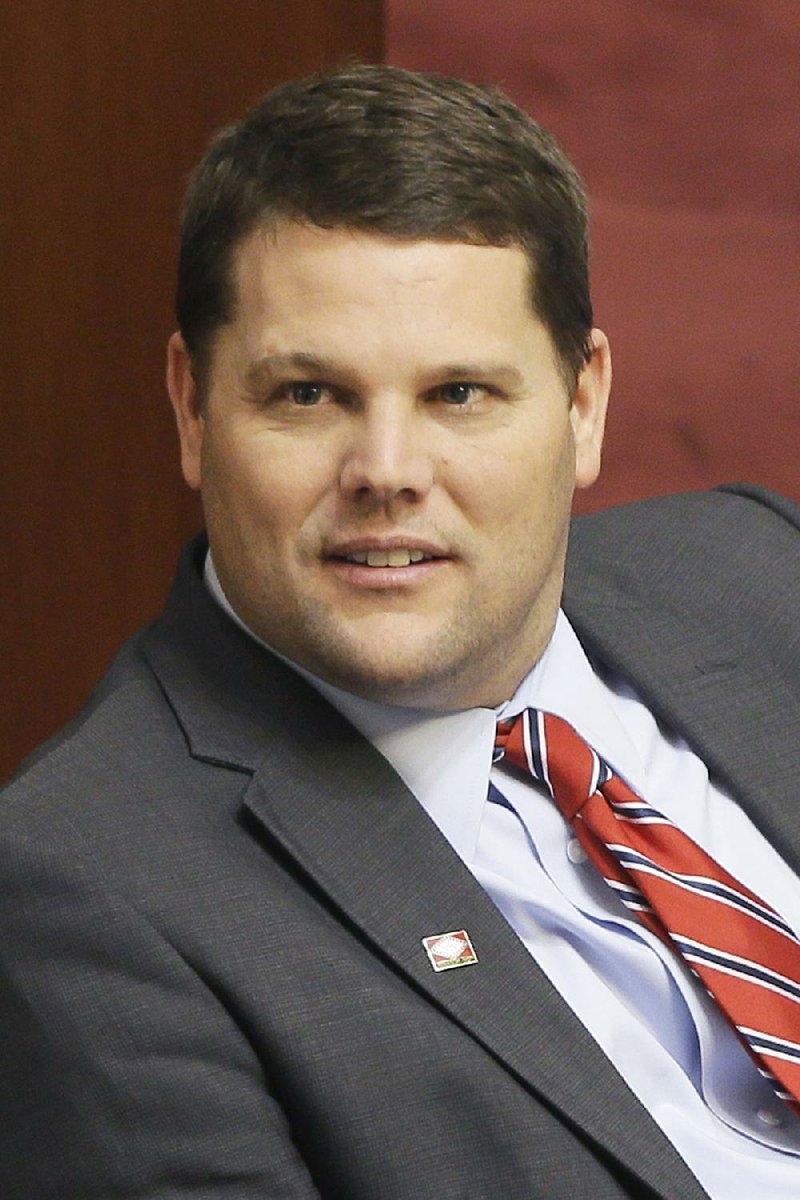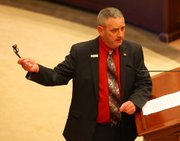The number of employees working in full-time positions at the state’s two- and four-year colleges rose by 3,290 last fiscal year, to 28,419, according to state records, but an administrative change is behind most of the increase.
RELATED ARTICLES
http://www.arkansas…">State’s payroll pruned by 324
The public higher-education worker total, combined with those of other state entities, meant that the total number of state employees increased by 2,966, to 59,929, in fiscal 2016, which ended June 30.
The increase in higher-education numbers is mostly because of what the institutions are required to report to the Bureau of Legislative Research, state officials said. The higher numbers are not because of enrollment changes.
Enrollment at two- and four-year colleges declined from 193,334 in the 2014-15 school year to 191,770 in the 2015-16 school year; enrollment at four-year schools increased slightly, but it dropped at two-year colleges, according to the state Department of Higher Education.
A 2015 law required colleges and universities to report when they have parttime employees working in full-time positions. That change is behind the increase reported to the Bureau of Legislative Research, said Senate President Pro Tempore Jonathan D i s m a n g , R-Searcy.
The state’s total employee salary and benefit costs declined by $53.3 million in fiscal 2016 to $3.9 billion, according to state Department of Finance and Administration records. Most state employees received 1 percent cost-of-living raises in fiscal 2016.
Finance department records show that the University of Arkansas for Medical Sciences’ payroll and benefit costs dropped by $125 million, from $914 million in fiscal 2015 to $789 million in fiscal 2016. But UAMS’ total compensation costs increased from $878 million in fiscal 2015 to $928 million last fiscal year, said UAMS spokesman Leslie Taylor.
Periodically, errors creep into the state’s reports on employees in full-time positions, as well as total state employee compensation, but the reports provide a broad snapshot of state government operations each year.
The 3,290 increase in the number of employees in full-time positions at public colleges and universities came after the Department of Higher Education advised the schools to begin reporting adjunct/part-time faculty members and graduate assistants working in full-time positions to the Bureau of Legislative Research, starting in fiscal 2016, said Tara Smith, the department’s senior associate director for institutional finance.
“The number of adjunct/ part-time faculty and graduate assistants can be significant on a campus,” she said.
“So while I do not know the exact number that was growth versus actual change in reporting requirements/ practices, I would estimate that the majority of the difference is more due to change in reporting than in actual growth,” Smith said. “[E]ach institution is on their own operating systems and are not required to provide any ongoing reports that would provide me with the exact break-out to be able to give you exact numbers on what is actual growth and what is from reporting changes.”
The changes in reporting requirements and practices are in response to the 2015 Legislature’s enactment of Act 370 — sponsored by Sen. Bart Hester, R-Cave Springs — which det a i l s wh a t information state agencies a n d h i g h - er-education institutions are required to report each month to the B u re a u o f Legislative Research about their ranks of employees.
Act 370 requires the higher-education institutions to include in their number of full-time employees “ninemonth staff and faculty who are removed from the payroll, but are still considered to be employed by the institution of higher education and are assumed to return the next semester …. during the months that they are not on the payroll.”
Hester said his aim is to have “a consistent report,” so that the number of employees at higher-education institutions is reported to the Bureau of Legislative Research on the same basis that other state agencies report their numbers of employees.
The largest increases in reported employees in fulltime positions were at UAMS, the University of Central Arkansas and the University of Arkansas at Fayetteville, according to a Department of Finance and Administration report summarizing the figures collected by the bureau.
In fiscal 2016, UAMS’ employees in full-time positions increased by 1,176, to 9,878.
UAMS reported adding 1,100 medical residents, graduate assistants and part-time benefits-eligible employees for fiscal 2016 that it didn’t report in the final three months of fiscal 2015, Taylor said. Residents are medical school graduates who receive education in specialized fields, she said.
“The other 76 employees can be attributed to growth in our clinical, research and education programs,” she said, ranging from the addition of two primary-care clinics to recruiting world-renowned scientists in the fields of biostatistics, genomics and cancer treatment research.
At the University of Central Arkansas in Conway, the number of employees in fulltime positions increased by 438, to 1,737, last fiscal year, according to the finance department report.
“We are now including part-time employees in a fulltime (appropriated) position which includes our part-time faculty and graduate assistants [and] this accounts for an additional 412 being reported last fiscal year that were not reported in past years,” said Valerie Nicholson, data manager in UCA’s Office of Human Resources.
At UA-Fayetteville, the number of employees in fulltime positions increased by 431, to 4,009, last year, the finance department report shows.
The numbers increased primarily because of the addition of 320 graduate assistants in reports to the bureau, said Mark Rushing, assistant vice chancellor for university relations at UA. The 3,578 employees reported in fiscal 2015 would have been 3,901 employees if the new reporting requirement had been implemented then, he said.
“Once the numbers are normalized between the years, we had a net increase of approximately 109 FTEs [fulltime equivalents],” he said.
“The 109 employee increase is largely due to hiring additional personnel to handle the growth in the campus over the past few years with most of the increase relating to academics (35 faculty, 9 GA’s, 37 in Academic Affairs relating to advising, tutoring and support, 13 in Student Affairs to assist in the growth, 19 related to Athletics and 6 in Finance and Administration,” Rushing said in a written statement.
Rep. Douglas House, R-North Little Rock, said, “As to the colleges, Amendment 33 pretty much keeps the Legislature from telling the 2-4 ye a rs wh o they can hire, where they should be employed, etc.
“ We f u ss a b o ut a d - ministrators growing faster than the students and professors, but if they have the money, they decide,” said House, co-chairman of the Joint Budget Committee’s personnel subcommittee. He was referring to the state constitutional amendment that addresses the relationship between the boards of higher-education institutions and the governor and Legislature.
Gov. Asa Hutchinson said his proposed changes to the higher-education funding formula would help accomplish his objectives for the colleges and universities.
“That is what will really set the framework for the future in terms of not only increasing the graduation rate, but also … the use of dollars in the efficiency side of the formula,” the Republican governor said.

